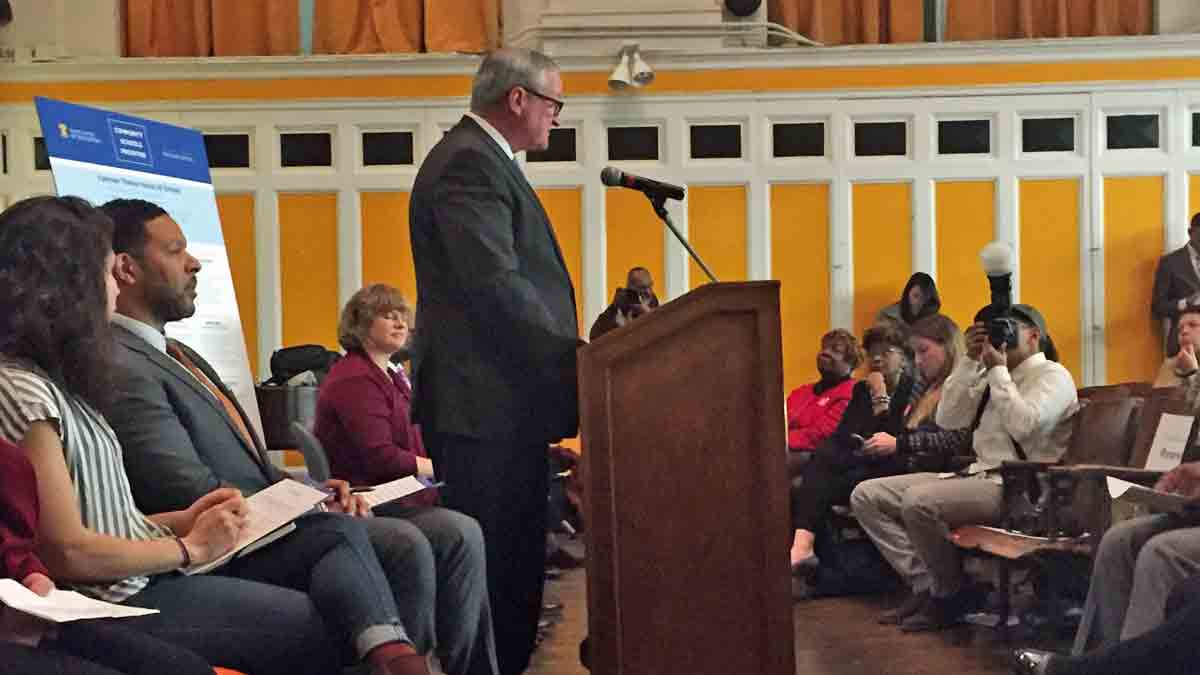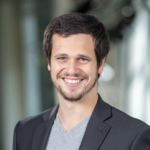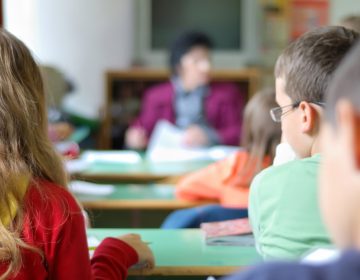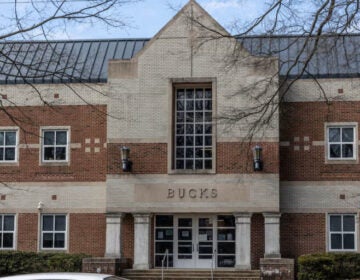Philly’s community schools start to take shape

Philadelphia Mayor Jim Kenney. (Avi Wolfman-Arent/WHYY)
For months now, coordinators at Philadelphia’s new batch of community schools have been planting the proverbial seeds.
They’ve held neighborhood forums, reached out to local nonprofits, and surveyed community members. They’ve spent hours talking and networking and contemplating what kinds of solutions would make the most sense in their specific schools.
Now the seeds of that work are beginning to bear fruit — sometimes in the form of literal seeds.
At Murrell Dobbins High School in North Philadelphia, the freshly minted community school calls for the creation of a community garden and farmers market to help combat food insecurity.
“That way the community actually is providing for itself,” said Charles Reyes, Dobbins’ community schools coordinator.
On Thursday, the city released official plans for each of the nine community schools participating in Philadelphia’s latest urban education experiment. Through the community schools initiative, Philadelphia wants to create schools that are hubs for outside supports. That way, the theory goes, you can lift the surrounding community while solving the sort of non-academic challenges — such as hunger — that can trip up low-income students.
Mayor Jim Kenney is betting big on the model, despite questions over whether it focuses enough on academics to truly lift student outcomes. Kenney wants to create 25 community schools at a cost of $40 million, which he plans to fund through the headline-grabbing tax on sweetened beverages.
In year one, the bill for community schools will run $3.75 million, much of it geared toward paying coordinators and administrators. Thursday provided a look at what those coordinators and administrators have been doing on the city dime.
At a press conference packed with city officials, each school released a “community school plan” that details the types of problems community members want addressed and how the schools might address them.
Dobbins’ plan focuses on improving school climate, increasing job opportunities, and providing better access to healthy foods. Reyes and principal Toni Damon have plans for in-school apprenticeships, a GED program open to community members — and even a family game night.
“We want the community to know that Dobbins is a beacon of light,” said Reyes, a Dobbins graduate whose idea for a community garden was inspired by the smaller gardens he used to see in the surrounding neighborhoods.
That’s the big idea here, transforming schools into vibrant nerve centers of communal activity.
“Schools have always been the focal point of the community,” said City Council President Darrell Clarke. “There may not be a health care facility. There may not be a training facility in every neighborhood. But there’s a school in every neighborhood.”
And that’s why, officials said, the neighborhoods themselves informed each school plan. Over months of meetings and interviews, each school’s community schools coordinator worked to identify existing services and pressing needs. Each school formed a committee to process feedback and sift through reams of community-specific data.
The result is an individual plan for each community.
Edward Gideon school has designs for an on-site health facility. At Southwark School, the roadmap calls for connecting immigrant families to job training and resettlement services.
“Each school is different, and it’s really important that the strategies moving forward address that,” said Susan Gobreski, the mayor’s point person on community schools.
Given the spotlight on this strategy, there are few details right now on how the city plans to gauge its effectiveness. Officials have said before they won’t be laser focused on academic outcomes such as test scores, at least not initially. They’re more likely to look at participation data, school attendance, and other measures of engagement.
WHYY is your source for fact-based, in-depth journalism and information. As a nonprofit organization, we rely on financial support from readers like you. Please give today.





